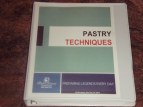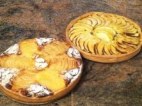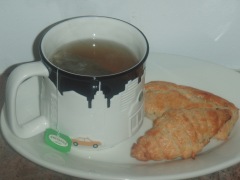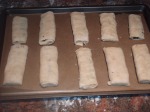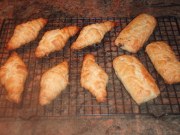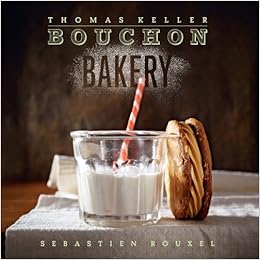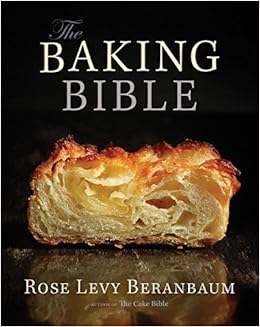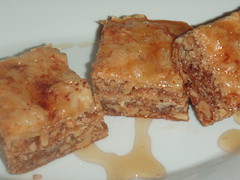West 10th Street Brownies
In 2011, I took a baking class at The Institute of Culinary Education (ICE) at 50 West 23rd Street in New York City (Amazing class! I would recommend any of the classes offered at ICE. Check them out at ICE). The class was called “The Best Brownie Workshop” and was a collection of Nick Malgieri’s brownie recipes. Nick is the former Executive Pastry Chef at Windows on the World, is a 1996 inductee into Who’s Who of Food and Beverage in America. His twelfth and latest book is NICK MALGIERI’S PASTRY: FOOLPROOF RECIPES FOR THE HOME COOK. He was voted one of the ten best pastry chefs in America by Chocolatier and Pastry Art and Design magazines in 1998 and 1999, and he is the director the baking program at ICE. Check him out at Nick Malgieri.
Of course, I keep all the folders and pamphlets from past classes I take and these brownies have been a ‘go to’ for me for years now. I haven’t made them in quite some time, but it was a colleague’s birthday and these brownies were the perfect solution.
Story behind the West 10th Street Brownies:
“The name of this recipe is because I found it in Greenwich Villiage a few blocks from where I live. As I walked east on Tenth Street, I saw a yellowed index card lying on the sidewalk. When I picked it up and saw written in spidery hand in blue fountain pen ink a recipe for ‘The Best Brownies in the World.’ Well, I put it aside in a miscellaneous recipe file, and a few months later tried it. They turned out to be sensational and certainly a contender for the title.” – Nick Malgieri
I hope you enjoy them as much as I do!

Prep Time Cook Time Total Time
15 Minutes 30 Minutes 45 Minutes
___________________________________________
Yields: ~24 2-inch Brownies
Ingredients:
- 16 tbs (2 sticks) unsalted butter
- 3 ounces unsweetened chocolate, cut into 1/4 inch pieces
- 4 large eggs
- 1/2 tsp salt
- 1 tsp vanilla extract
- 2 cups sugar
- 1 cup all-purpose flour
- 1 Tsp of Cinnamon (*my personal addition the the recipe*)
- 1 cup (6 ounce bag) semisweet chocolate chips
- 19 x 13 x 2-inch pan
Instructions:
- Set a rack in the middle level of the oven, preheat to 350 degrees Fahrenheit and butter the pan well
- In a saucepan, melt the butter over medium heat. Once melted, remove from heat and add the 3 ounces of unsweetened chocolate. Let it sit for 2 minutes, then whisk until smooth. *If not all the chocolate has melted, add back to very low heat and stir constantly. Chocolate can burn rather quickly, so make sure to remove from heat just before it is fully melted*
- In a large bowl whisk together the eggs, salt & vanilla until just mixed.
- Whisk in the sugar in a constant stream
- Whisk in the chocolate butter mixture
- In a separate bowl, mix together the flour and cinnamon, switch to a rubber spatula and fold into the chocolate/egg mixture.** Fold technique: The reason the flour is folded into this recipe rather than just mixed is to keep the air inside. This is what creates the airiness and volume in cakes and brownies. To fold in the flour make horizontal sweeping motions, like you’re folding what’s already in the bowl over the flour that you’ve added. Each time I do one sweeping motion I rotate the bowl slightly so that I’m folding from different angles and making sure I haven’t missed any of the flour. Make sure to scrape down the sides and bottom of the bowl as well.** Careful: One of the biggest mistakes people (including myself sometimes) make when it comes to brownies is over mixing. **
- The batter may still be warm from the melted butter and chocolate. If so, set it aside until it has cooled to room temperature (test it with your fingertip). Once cooled, fold in the chocolate chips until just combined.
- Pour into the prepared baking dish and level with an offset spatula
- Bake for 30 minutes, or until a toothpick inserted in the center comes out clean.
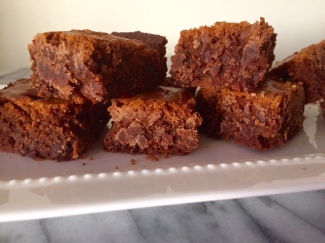
- Transfer the pan to a wire rack and let them cool completely, roughly 1 – 2 hours.
- Wrap the pan in plastic wrap and refrigerate for at least 4 hours or overnight is best.
- Once cold, transfer to a cutting board, measure two-inch squares and cut into pieces and eat them!

Enjoy!
Kristin


